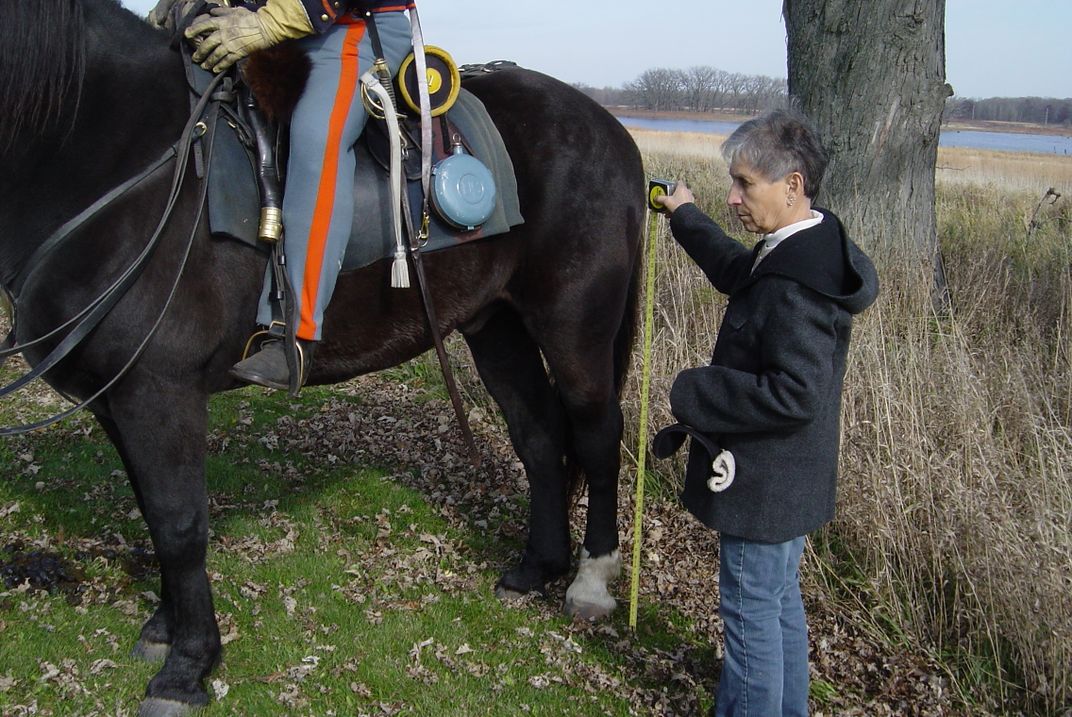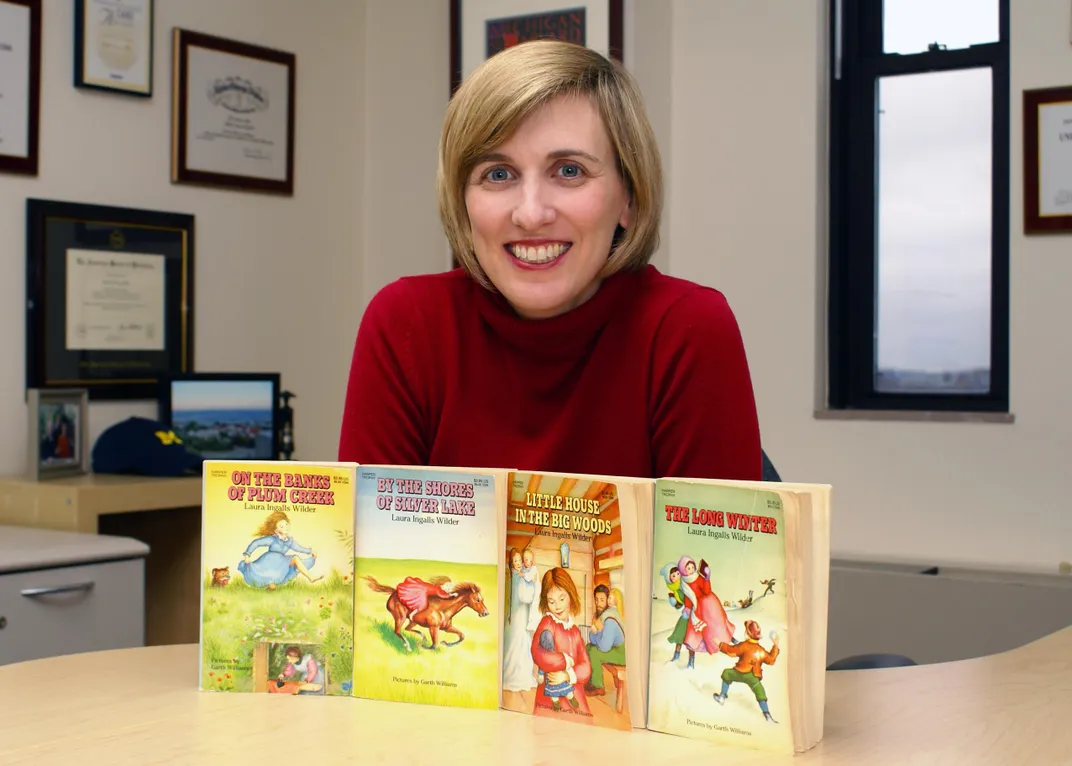The Science of “Little House on the Prairie”
A mutual passion for Laura Ingalls Wilder inspired scientists in unrelated disciplines to investigate events from the famous author’s world
/https://tf-cmsv2-smithsonianmag-media.s3.amazonaws.com/filer/10/c4/10c457d7-1fb1-4493-b0cf-efa7540e692c/my005189.jpg)
To read Laura Ingalls Wilder’s Little House books is to step out of one’s own world and into hers. For all their relentless nostalgia, their luscious descriptions of life on the prairie, it’s hard to criticize their rich detail.
Wilder has achieved folk hero status thanks to eight books she wrote and published between 1932 and 1943, and a ninth published posthumously. Based on her family’s travels as settlers in Wisconsin, Minnesota and South Dakota from the 1860s through the 1880s, the novels are considered to be semi-autobiographical, even with Wilder’s tweaking of dates, people and events.
Reading the books, though, it’s hard to resist treating the stories as a true historical account. So rich is Wilder’s detail that you’re on the prairies with her, bundled in furs during winter, or roasting in the summer sun in a full-sleeve dress. Readers don’t just get a window into her life; they walk by her side.
For this reason, her biggest fans hold the LauraPalooza conference every two years to celebrate their heroine’s life and works. But like a Russian nesting doll, within every subculture is yet another subculture, and one unexpected element of the conference: hard scientific study.
Wilder’s reflections on her life experiences have spurred some scientists to use remarkable research techniques to clarify details from the books that seem a little too incredible. Finding the site of a schoolhouse where she taught that hasn’t existed for decades; a terrible winter of blizzards pounding the Ingalls’ small town day after day—for months; Laura’s sister being blinded by a fever that shouldn’t normally cause that kind of damage.
“Scientists are a bit like detectives,” said Barb Mayes Boustead, a presenter and co-organizer of this year’s conference, held in July at South Dakota State University. “We see something that isn’t explained, and we want to find the evidence that will help explain it. There is no shortage of aspects of Laura’s life and writings to investigate.”
********
From an early age, Jim Hicks had a special empathy for Laura: they both grew up on the prairie. Reading Wilder’s books next to a hearth in his small elementary school in Woodstock, Illinois, snow chipping away at the windows, he developed an interest in visiting the places Laura described in her books.
A retired high school physics teacher, Hicks strived to have his students understand physics in real-world terms. He turned his own classroom techniques on himself when trying to find the site of the Brewster school, where Laura went to teach as a mere teenager:
The Brewster settlement was still miles ahead. It was twelve miles from town. … At last she saw a house ahead. Very small at first, it grew larger as they came nearer to it. Half a mile away there was another, smaller one, and far beyond it, another. Then still another appeared. Four houses; that was all. They were far apart and small on the white prairie. Pa pulled up the horses. Mr. Brewster's house looked like two claim shanties put together to make a peaked roof. –These Happy Golden Years (1943)
Hicks knew that Laura traveled to the school in a horse cart. Thinking of horse legs as compound pendulums, swinging back and forth with a constant time period, Hicks measured the length of his wife’s horse from knee to hoof to figure out the time of one oscillation. Then by measuring the stride length for a casual walk, Hicks could estimate the rate of travel, in this case around 3 miles per hour.

In These Happy Golden Years, Laura describes the drive as occurring just after the family’s noon meal in December. To get back before dark, Hicks estimated Laura’s driver, her father, had five hours of daylight to make the round trip, so one leg would take 2 ½ hours. At a horse speed of 3 miles per hour, a one-way trip would be between 7 or 8 miles, not the 12 that Laura estimated in the excerpt above.
Finding an old map Laura drew of DeSmet, South Dakota, which showed the Brewster school in a southwesterly direction, Hicks drew a seven-to-eight mile arc on a map of DeSmet. With the help of homestead land claim records and Laura’s description that she could see the light of the setting sun glinting off the windows of a nearby shanty, Hicks predicted the most likely location of the Brewster school site, to the west of a homestead settled by the Bouchie family, the “Brewsters” of Laura’s books. Further research confirmed another book detail: Louis and Oliv Bouchie homesteaded on separate but adjoining parcels, and to satisfy homestead requirements, built the separate halves of their mutual home right on the dividing line.
The result: Laura’s peak-roofed shanty.
“Art, physics and all the liberal arts and sciences are an invention of the human spirit, to try and find answers for causes,” says Hicks. “For a true depth of understanding, to be able to think on your feet with a balanced worldview, you need both parts.”
*********************
When she’s not helping organize LauraPalooza, Barb Boustead spends her hours as a meteorologist in the National Weather Service’s Omaha office. An impassioned weather educator, she writes about the science of weather, its impacts, and how people can prepare for inclement weather on her blog, Wilder Weather.
At the end of a recent winter, Boustead revisited a Wilder book from her youth, The Long Winter, centered on the Ingalls’ trials during an exceptionally harsh South Dakota winter.
"There's women and children that haven't had a square meal since before Christmas," Almanzo put it to him. "They've got to get something to eat or they'll starve to death before spring." – The Long Winter (1940)
Boustead said she found herself wondering whether the back-to-back blizzards Laura wrote about had been as bad as she described. Boustead realized that as a meteorologist, she had the tools not only to find out, but to quantify that winter’s severity.
The winter of 1880-81 was relatively well documented for the time. Compiling records on temperature, precipitation and snow depth from 1950 through 2013, she developed a tool to assign a relative “badness” score to the weather recorded at one or more stations in a geographic area. The Accumulated Winter Season Severity Index (AWSSI, rhymes with “bossy”) assigns an absolute severity grade for how the weather compares with the entire country, and a relative severity grade for comparing regional weather. It can also track year-over-year trends.
Boustead applied the tool to records at weather stations from the 1800s. Every site Boustead investigated in Laura’s region in that year falls into the “extreme” category rating on the AWSSI scale, marking it as a record year for snowfall and temperature lows. The season covered in The Long Winter still ranks in the top 10 worst winters on record for South Dakota, as well as other regions of the country.
Boustead said she has found that people pay more attention to the science of weather when a good story is involved. “Scientists are told to give facts and information, and not tell a ‘story,’ since that becomes associated with fiction—but it’s not fiction,” Boustead said.
*********
During a meeting in 2000 between medical students and an attending physician at the Albert Einstein College of Medicine in New York City, the subject of scarlet fever came up.
Beth Tarini, now an assistant professor of pediatrics at the University of Michigan, but at the time a third-year medical student on her pediatrics rotation, piped up. “You can go blind from that, can’t you?”
The attending physician said no, but hesitated when Tarini insisted, citing it as the cause of Mary Ingalls’ blindness, as recounted by her sister Laura in By the Shores of Silver Lake.

Motivated, Tarini started digging through med school books and references from the 19th century to see if she could find even a hint of verification that scarlet fever could truly be the cause of Mary’s loss of vision. Picking up the project after a decade-long hiatus, Tarini and an assistant, Sarah Allexan, broadened the search, seeking evidence of an epidemic that might have caused a spate of blindness in children.
They found something better: an actual account of Mary’s fever, facial paralysis and month-long descent into blindness in a local paper from the Minnesota town where the Ingalls family lived.
They also dug into letters between Laura and her daughter Rose, which eventually became part of Laura’s autobiography:
She was suddenly taken sick with a pain in her head and grew worse quickly. She was delirious with an awful fever. We feared for several days that she would not get well. … One morning when I looked at her I saw one side of her face drawn out of shape. Ma said Mary had had a stroke. –Pioneer Girl (Published posthumously in 2014)
Using the newspaper’s reports along with those letters, Tarini guessed Mary had been laid low by either meningitis or encephalitis. A main clue was Laura’s description of Mary’s affliction as a “spinal sickness.”
She narrowed down the likely cause as viral meningoencephalitis, an inflammation of the covering of the spinal cord and brain, not only because of the prolonged headache and fever, but because of the time it took for Mary to go blind. Losing her vision progressively was more indicative of nerve damage from chronic inflammation following an infection. Laura had probably described Mary’s illness as scarlet fever because it commonly plagued children in that time, and readers would have been familiar with it as a terrible illness.
“The newspaper reports brought home the fact that Mary was a real person and her suffering was witnessed and recorded by her community,” Tarini said. “That reinforced our sense that we were getting close to truth.”
Viral encephalitis does not have a cure. Like other virus-caused illnesses, it simply must run its course. But chances are, if Mary Ingalls were similarly stricken today, her blue eyes would still see after she recovered. Hospitalized immediately for a spinal tap and full bloodwork, she would be well fed and kept hydrated, treated for seizures if they occurred, and given steroids for any vision-threatening inflammation. Tissue and fluid samples may be sent to the Centers for Disease Control to help confirm the diagnosis of viral or bacterial meningitis or encephalitis.
“It’s the ultimate differential diagnostic challenge,” Tarini said. “I don’t have the patient there to give me the history or to examine. I had to assemble the clues that history left me.”
/https://tf-cmsv2-smithsonianmag-media.s3.amazonaws.com/accounts/headshot/Michelle-Donahue.jpg)
/https://tf-cmsv2-smithsonianmag-media.s3.amazonaws.com/accounts/headshot/Michelle-Donahue.jpg)